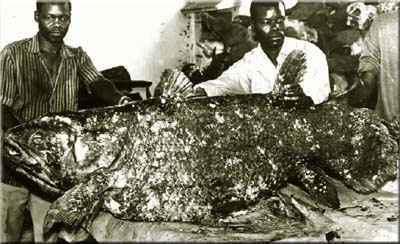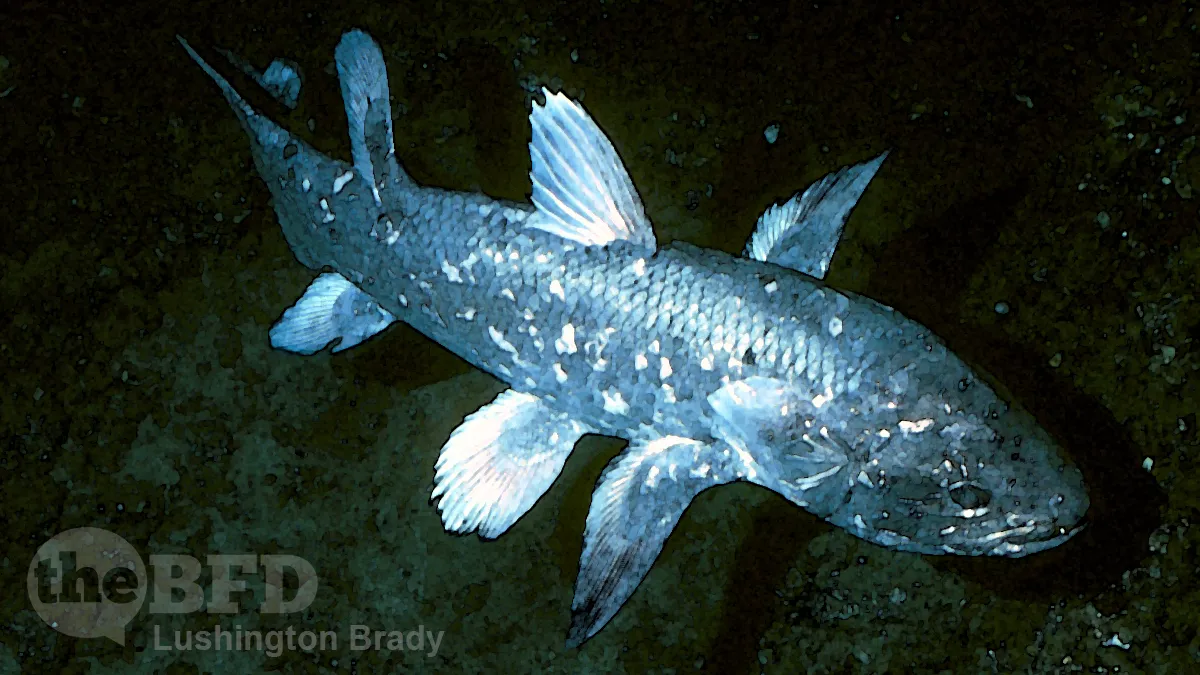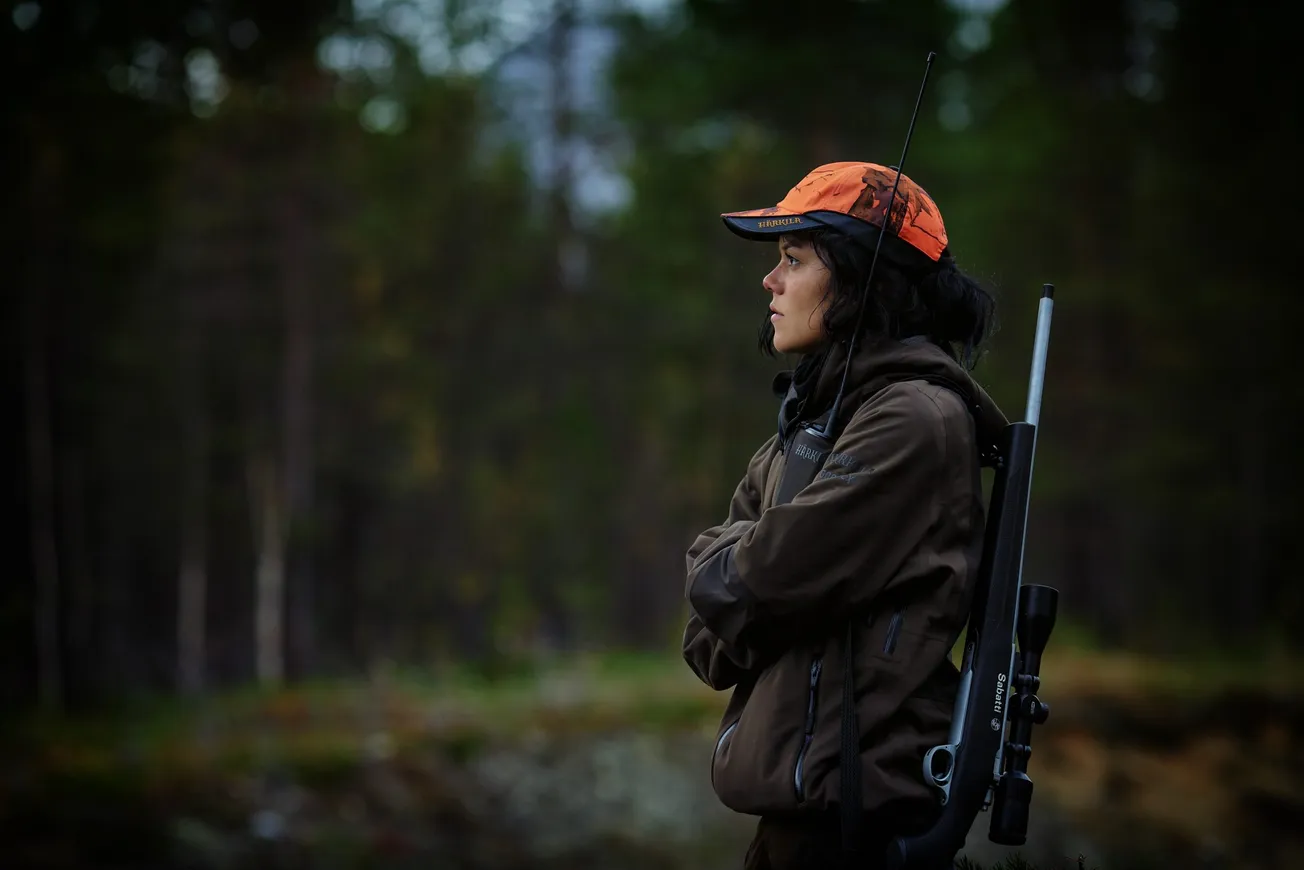Table of Contents
Coelacanths really are a remarkable fish.
For decades, the species was only known by its fossils. Fossils that showed the fish had been around for a very, very long time. Coelacanths belong to a lineage of lobe-finned fishes – which are more closely related to tetrapods (amphibians, reptiles, birds and mammals) than most other fish (ray-finned fishes).
The lobe-finned fish first diverged from the rest of the fish family some 425 million years ago. Through all the exciting, dinosaur-dominated eons that followed, they quietly puttered along in the oceans. Until the late Cretaceous era, shortly before the end of the dinosaurs.

After that, they apparently vanished from the fossil record. So the creatures were thought to be extinct for some 65 million years.
Until 1938. In that year, fisherman off the coast of South Africa hauled in a most unusual catch: a living coelacanth. The species is now known to exist in deep waters mostly off the eastern African coast, as well as Indonesia.

But, being a rare species living in the inaccessible deeps of the ocean, relatively little is known about the coelacanth.
We can now add a little more to what we know.
There are two living species: Latimeria chalumnae form the Comoros Islands off the east coast of Africa, and Latimeria menadoensis from the waters off Sulawesi, Indonesia.
Considered critically endangered, Latimeria chalumnae is characterized by a large body size that can reach up to 2 m (6.6 feet) in length and weigh up to 105 kg, with large length at maturity (around 1.5 m, or 4.9 feet).
These fish are ovoviviparous, produce a relatively small number of offspring, and have a large size at birth (around 35 cm, or 14 inches).
They are thought to be a nocturnal drift-hunter, and their unique movements are generally slow, though they can exhibit fast-start escape responses.
Like other deep sea species, such as orange roughy, coelacanths have a slow metabolism. This seems to be an energy-saving adaptation.
They may also live a lot longer than previously thought.
Earlier studies attempted to age Latimeria chalumnae by directly observing growth rings on the scales of a small sample of 12 specimens. Those studies led to the notion that the fish didn’t live more than 20 years.
In the current study, Dr. Kélig Mahé from the Fisheries Laboratory at IFREMER and colleagues used new methods, including polarized light microscopy and scale interpretation technology, to study growth on scales based on a large sample of 27 Latimeria chalumnae specimens.
The researchers found that their oldest specimen was approximately 84 years old.
This places the coelacanths among the ocean Methuselahs which embody the adage about slow and steady.
“Our new age estimation allowed us to re-appraise the coelacanth’s body growth, which happens to be one of the slowest among marine fish of similar size, as well as other life-history traits, showing that the coelacanth’s life history is actually one of the slowest of all fish.”
While earlier studies relied on more readily visible calcified structures called macro-circuli to age the coelacanths much as counting growth rings can age a tree, the new approaches allowed the scientists to pick up on much tinier and nearly imperceptible circuli on the scales.
“We demonstrated that these circuli were actually annual growth marks, whereas the previously observed macro-circuli were not,” Dr. Mahé said.
“It meant that the maximum longevity of coelacanth was 5 times longer than previously thought, hence around a century.”
Research also hints at another remarkable fact about coelacanths.
The analysis of two Latimeria chalumnae embryos showed they were both about 5 years old.
Using a growth model to back-calculate gestation length based on the size of offspring at birth, the authors got the same answer.
They now think that coelacanth offspring grow and develop for 5 years inside their mothers prior to birth.
“Coelacanth appears to have one of, if not the slowest life histories among marine fish, and close to those of deep-sea sharks and roughies,” Dr. Mahé said.
Sci News
Not bad for a living fossil.
Please share this article so that others can discover The BFD









